Sure, you’ve made a resolution—we’re more than a week into the New Year. But by now, if you’re like , your commitment has already fizzled. That’s because you can’t just wake up one morning and decide you want to become an all-star skier. You need to set concrete goals, track your progress, and turn your resolutions into lasting habits. Sound tough? Not if you have the right coach. Let our fifteen-part plan guide you to greatness—and get ready for your best year ever.
Reject Resolutions, Embrace Habits
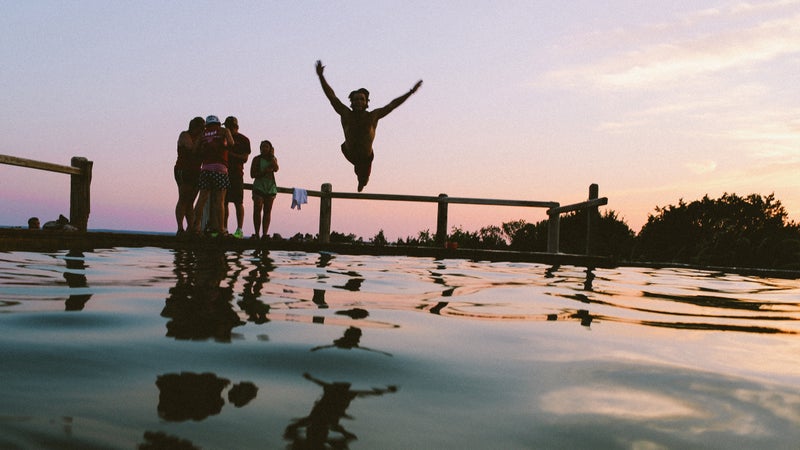
You’ve read the statistics. Only 64 percent of people stick with their New Year’s resolutions beyond the first month. That number drops to 46 percent six months into the year. So what can you do?
- Set goals—and make them specific. Everyone wants to lose weight, run faster, and get stronger. But , like running a loop a minute faster per week.
- ����������������. Don’t dream only about your perfect future self—when you incorporate practical visualization into those fantasies, scientists believe you’ll have a better chance of making them come true. First, picture yourself sticking to your goals. Next, think through the obstacles in your way. Finally, lay out a plan to overcome those roadblocks.
- Hack your biology. You can train yourself to do anything—from running every morning to reading books every evening—without having to rely on limited willpower. How? Turn that behavior into a habit, says Charles Duhigg, author of . It involves some self-conditioning, but anyone can make a desired behavior a habit. You just need a cue—“the trigger for an automatic behavior to start,” Duhigg says—and a reward, the thing that makes your brain “latch onto that pattern and remember it, which makes it automatic in the future.”
Want to run more? Leave your shoes by the door (the cue) and give yourself a reward for finishing, like a piece of chocolate. “Eventually, when you see the shoes, your brain will start craving the reward, which will make it easier to work out day after day,” Duhigg writes. Soon enough, you’ll view the run itself as the reward—and a healthy habit is born.
Create Your Own Reboot
In this action plan, we’ve identified 15 habits—some serious, some absurd, others impossible—to set this year. Why 15? Why add the outlandish? Because goal setting should be personal, even if the science behind setting great goals is universal. Believe it or not, some people just don’t love coffee (habit #9) or can’t do without their phones (habit #15). So, begin with this checklist—but don’t let it be the final word on your reboot.
Become a Renaissance Athlete

Most great athletes are synonymous with their sport. You see Kelly Slater, you think surfing; Julia Mancuso, skiing. But here’s the thing: Even pros do other sports. Slater, for instance, swears by jiujitsu, CrossFit, and free diving to stay at the top of his game. And Mancuso tow-in surfs.
Why? “Variety keeps you challenged physically and mentally, which means faster total fitness gains,” says . Plus, if you’re always doing the same workouts, you run a higher risk overuse injuries, muscle imbalances, staleness, and boredom.
Vow to change it up. The goal is to capitalize on what you already enjoy and to work new muscles, build strength in new planes, and increase your agility. “What I don't recommend,” Sims says, “is taking an adrenaline junkie and suggesting yoga.”
How to Pick a New Sport
- You’re an endurance runner: Add circuit work with high-intensity bursts, Sims says, something like CrossFit.
- Road cyclist? You don’t have to do a 180 and become a basketball player. Mountain biking should do the trick. Off-road riding will build your technique and force you to develop a stronger all-around body.
- Cross-country skier? Try winter pole trekking or snowshoeing—they’ll build your aerobic fitness and strength. Plus, you’ll feel faster when you put your skis back on.
We Tried It: Train Solo
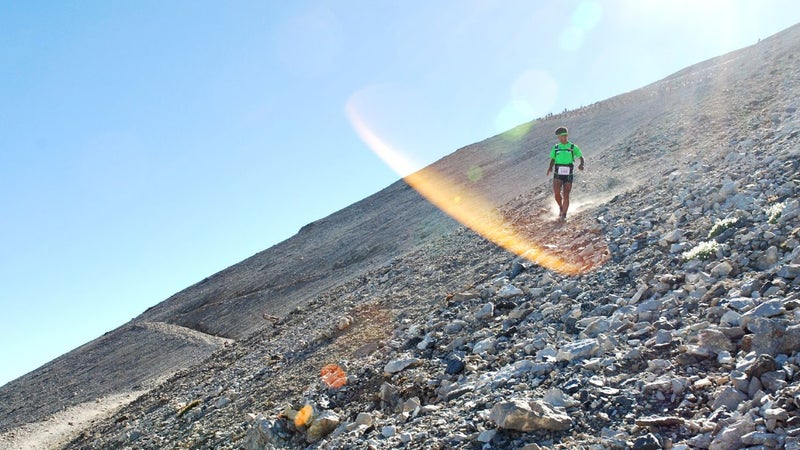
Six days a week for five years, pro runner would meet with his McMillan Elite teammates to run. During the snowy, windy winters in Flagstaff, Arizona, they would huddle together between 8:30 and 9 a.m.; in summer, when the high desert heat is at its worst, they'd meet between 7 and 8 a.m. Under this rigid program, Gotcher ran his personal best in the marathon—2:10:36, which stands as the fourth-fastest debut ever by an American.
“Just having people out there is huge,” says the 30-year-old Adidas-sponsored athlete. But there was a downside: Not everyone improved at the same pace. There were a variety of reasons, ranging from injury to adaptability, personality, and even natural talent. Ultimately, however, that meant group workouts where everyone did the same thing weren’t necessarily what Gotcher needed to improve—running a certain pace could help others get faster, for instance, but not Gotcher. Finally, not long after he in 2012, Gotcher decided to leave Flagstaff, return to California, and train alone.
That’s where I met him, running the redwood-lined fire roads of Nisene Marks State Park in a t-shirt that said “El Gotch.” Almost three years after he left Flagstaff, he’s still happy with his decision.��Gotcher says it’s a different type of satisfaction to crush a workout without a soul watching him versus running in a group. “You’ve got to really get into your mind to accomplish something like that.” The mental toughness earned hammering solo comes in handy on race day when bad patches and empty spots along the course can test a runner’s mettle.
Another benefit, Gotcher says, is getting to choose your workout location. For him, it means he trains in his hometown on the Central Coast rather than in another state. For us non-pros, it can mean running at the local high school track instead of driving across town in rush-hour traffic for a group workout. And that could mean the difference between stomping intervals or scribbling a goose egg in your training log when just thinking about the commute saps your motivation.
But maybe the best reason to embrace the solo run is because no two runners are the same. If Gotcher is coming off a tough workout and feels he needs the extra hour of sleep, he takes it without worrying about teammates’ ire or a coach’s emails. Instead of listening to others, he listens to his body. Taking an extra day of easy running instead of a threshold workout with friends could mean the difference between a profitable training block and a season-ending injury.
I thought of Gotcher when I moved from my home Nashville home to Santa Fe to work for ���ϳԹ���. The move pulled me out of my running routines and away from my running partners. It’s been a long, uncomfortable process adjusting to 7,000 feet of altitude, and I’ve trudged through those slow, out-of-breath miles at my own pace. For the first month post-move, running alone sheltered my fragile ego, fluctuating morale, and my body’s natural pace of adaptation. For that first month, running alone was just what I needed.
One Sunday about a month in, I went for a long run with my neighbor. We went up and over the mountains. We talked the whole time—exactly what any other runner does on a long run—and it reminded me how much I’d missed having someone around. But my time running alone, at least for a season, has been both valuable and essential. And Gotcher agrees regarding his own move toward solitude: “Being in this environment,” he says, “is a huge positive.”
Eat the Same Breakfast Every Day
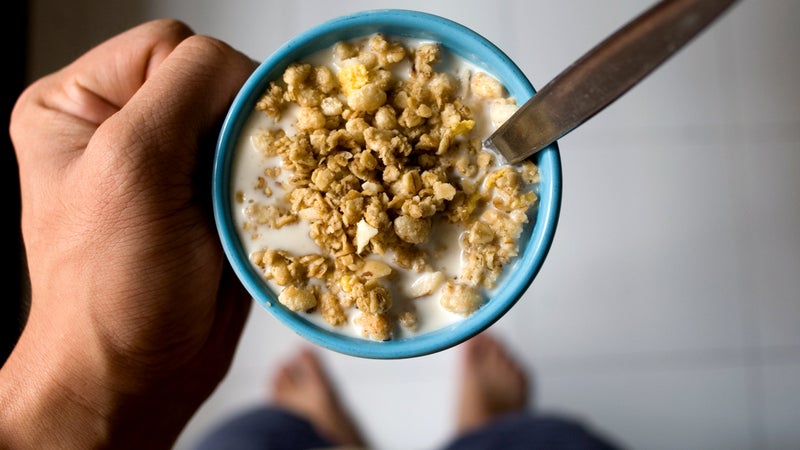
Steve Jobs was famous for his black turtleneck sweaters. Mark Zuckerberg every day. And President Obama . It’s not because they’re lazy. It’s just that they focus better on the stuff that matters most when they cut out extraneous decisions, like what shirt to wear.
“Think of your willpower like a muscle,” says . “Use it and it will get stronger, but overuse it and it will become fatigued and fail you.” It’s a process called decision fatigue. When our fleeting pool of willpower dries up, we falter and ultimately give in to unhealthy temptations—or bad business and policy choices.
You could wear the same thing every day and hope your coworkers know you do laundry. A more covert option: Eat the same breakfast each morning. Food, in particular, requires a lot of decision making—up to 200 choices a day, according to Brian Wansink of the Cornell University Food and Brand Lab. “I think that’s on the low side,” says Roussell. “Go to Chipotle and you have to make at least 15 in less than 90 minutes. The average Starbucks offers you 19,000 different drink possibilities.”
Take the decisions out of breakfast. “If you eat a quality breakfast, you’re less likely to eat a lousy lunch as you've already made the effort to eat right. Why blow it?” says Roussell. He recommends aiming for a mix of protein and produce and going light on the sugar. Try making your go-to meal something like eggs and salsa, a protein shake, or a Greek yogurt and a piece of fruit. You’ll reduce decision fatigue and set the stage for a healthier day of eating.
We Tried It: Eat Dinner in Front of the TV
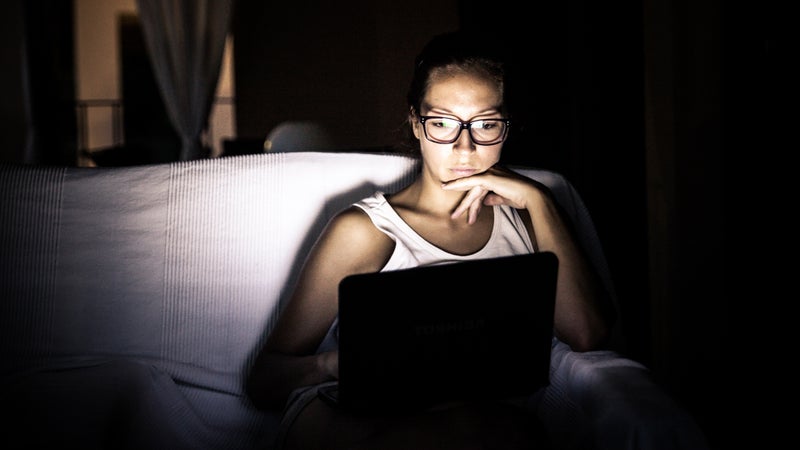
Back in the late ’90s, that 66 percent of Americans ate dinner in front of the TV. The says 40 percent of us do it, and a found that 33 percent of its viewers dine with the TV on. Whatever the exact number of TV diners, the point is this: A lot of us do it, myself included. So it’s already a habit.
Even worse, everyone and your mom say eating in front of the TV is a surefire way to get fat. Eating while distracted, , can make us ignore signals of satiety and than we would have if we paid more attention to our food. And we watch a ridiculous amount of distracting TV—.
It’s a no-brainer, then, to chuck the TV dinner trays. But boob-tube dining shouldn’t die—it just needs a makeover. My proposition: Watch TV only while eating dinner; you might wind up eating and watching less.
Now hear me out. I don’t have cable, but between Hulu comedies and Netflix movies, I probably spent a good two hours a night with my Vizio. And even though I believe there’s cultural value in just about everything I watch, from The Daily Show���ٴ���Brooklyn Nine-Nine to classic films like The Bicycle Thief, that’s just too much time spent staring at LEDs when I should be eyeing my neighbors’ decorating choices during a nighttime walk or learning Italian so I can read Dante’s Inferno in its original form.
And let’s be honest. Dinner takes all of 15 minutes to eat. Twenty tops, . Therefore, if I only watched TV while eating dinner, I’d watch only 20 minutes of TV. I gave myself 30, just to be nice. Cue: A phone alarm set for 30 minutes. Reward: Chocolate. Here’s what happened.
My Junk TV Time Decreased
If you’re like me, you have a list () of must-see movies that you’ve never watched because they’re too damn long.��Gone with the Wind: four hours.��Cleopatra: four hours, eight minutes. Plus, I’m traditionally an all-or-nothing TV watcher; I’d rather watch four complete half-hour shows in two hours than quit on a movie halfway through.
Knowing I was allowed to watch TV for just 30 minutes killed any hesitance to dive in—and watching Cleopatra eliminated any entertainment decision making for more than a week. I now know that Richard Burton had great legs for a miniskirt and Scarlett got what she deserved.
I Stopped Eating (But Not Craving) So Much Chocolate
Before embarking on this new adventure, my TV-time chocolate intake could drain an entire M&M's store in a month. My waistline hadn’t budged much—I’ll thank a seven- to 10-hour-a-week training schedule for that. But surely I didn’t need that third ramekin full of candies. When chocolate became my reward for turning off the TV and not something I’d start munching in TV hour two, I was satisfied with less, just like all those studies said.
Bonus: Much More Time for Training and Chores
I’d like to say it was something I saw during an evening stroll that inspired me, but my neighbors close their curtains at night. I simply had more time to do home projects. Within a span of two weeks, my husband and I put up crown molding and painted the walls in the kitchen, living, and dining rooms. It looks pretty good, too.
This does not mean that I’ve adopted the new TV habit without a hitch. There are times when my alarm sounds and I grab another handful of M&Ms and settle in for more SNL. I’ll thank my husband/accountability partner for throwing me a hoodie and dragging me out the door for a walk when that happens. But sometimes even he can’t resist a double feature of The Mindy Project. I’m not worried, though; habits aren’t made overnight.
Learn to Love the Nap
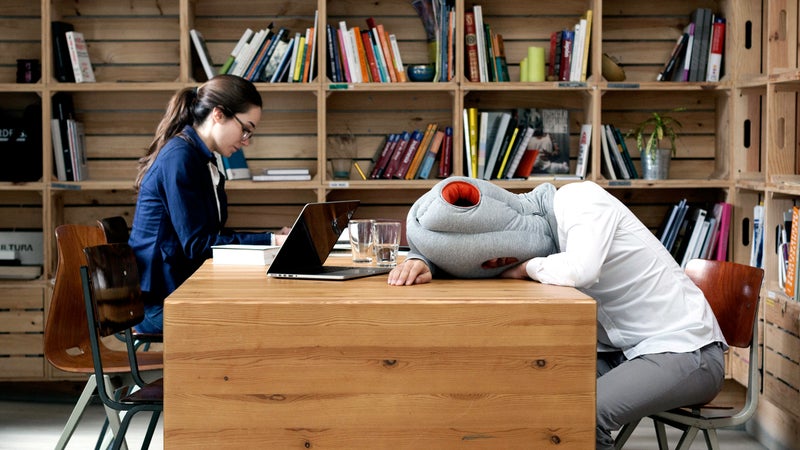
Naps are like snacks—with a good game plan, they can revitalize you, improving your mood and cognitive function, says Dr. Christopher Winter, medical director of the sleep center at Martha Jefferson Hospital in Virginia. Done incorrectly, however, napping can make you groggy and harm nighttime sleep.
Twenty to 30 minutes is the sweet spot, Dr. Winter says. Some experts believe can give you a mental boost, but if you need to make up for lost sleep, Dr. Winter says you can go longer—just cap your nap at an hour, and get it in to ensure it doesn’t interfere with nighttime sleep.
How to Have the Best Nap Ever (and Repeat 364 Times a Year)
- Don’t nap whenever. Think of the nap like a meal. Just like you might look forward to eating lunch around 1 p.m. every day, you want your brain to anticipate the nap. Getting on a nap schedule will make the nap seem like a reward in itself, just like lunch or dinner.
- Pick an end time and stick to it. Don't allow yourself to sleep later just because you didn't fall asleep immediately. If it’s taking you a while to fall asleep, you might not need the nap.
- Hold yourself accountable. If your naptime passes, you don't get to nap.
- Create an ideal sleep environment. Sleep in a dark room, perhaps with a blanket that has an unusual tactile feel, like fake fur—wrapping it around you can be your cue to sleep or your reward for napping. Take it a step further by spraying your pillow with lavender, which to relax you. Silence is best, too, but a good white-noise machine can counteract a noisy environment. The is the National Sleep Foundation’s top pick.
We Tried It: Sleep In
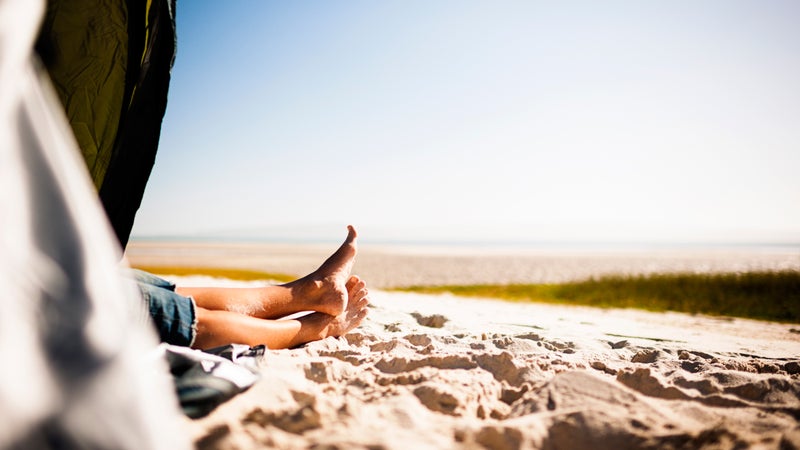
Here’s the thing: You cannot get into the habit of sleeping in every day. Should you continuously sacrifice office time or workouts for a little extra shuteye, you’ll likely wind up demoted and out of shape. And sleep experts insist that is key to getting a good night’s sleep. Pile on my own personal guilt associated with snooze-button abuse, and sleeping in seemed like a habit to kick, not embrace.
But it’s fair to say that nobody has ever maintained a completely consistent sleep schedule. We all get run-down sometimes. So I decided to get into the habit of sleeping in—when I needed it, and only on weekends. Call the cue my own exhaustion. The reward: bliss and an unusually lucid dream in which I explored a swamp. Here’s what else I learned on my journey to letting go and embracing my pillow.
You Probably Won't Sleep In as Long as You Think You Will
The science is clear.��Sleeping in is fine as long as you’re not doing it every day. If you’re healthy, the research shows you’ll wake up once you’ve had enough. I second that. Before this experiment, the longest I've ever slept was 14 hours—following 30 straight hours of dancing for a fundraising event. After a particularly grueling workweek, I silenced my phone, turned off all alarms, and slept about two hours more than usual. I woke well before late morning—my body is less of a glutton for sleep than I expected. And I woke up refreshed instead of groggy, as I’d feared.
You’ll Gain New Self-Awareness
Catch-up sleep at least helps improve daytime alertness, . I'm not sure I felt markedly more alert, but I skipped coffee and felt a lot more relaxed than I had all week. If anything, sleeping in made me more aware of how I should feel right after a good night of shut-eye: not necessarily alert right off the bat, but without question ready to function. It’s easier to get in touch with your mental state when you’re not stumbling around, just trying to stay awake.
You'll Get Over the Guilt
Even as someone who has felt that waking up after 9 a.m. is wasting the day, getting into bed with no timeline for getting up is one of the best feelings in the world. An even better feeling: When your eyes open naturally to the sound of—nothing, no alarm clock—especially if you’re like me and typically require a super-loud alarm to wake up.
At the end of a month, I’ve finally learned to heed the call when a recovery night is in order. There’s no shame in a morning without an alarm—and the snooze button.
Take a Sick Day When You’re Feeling Great
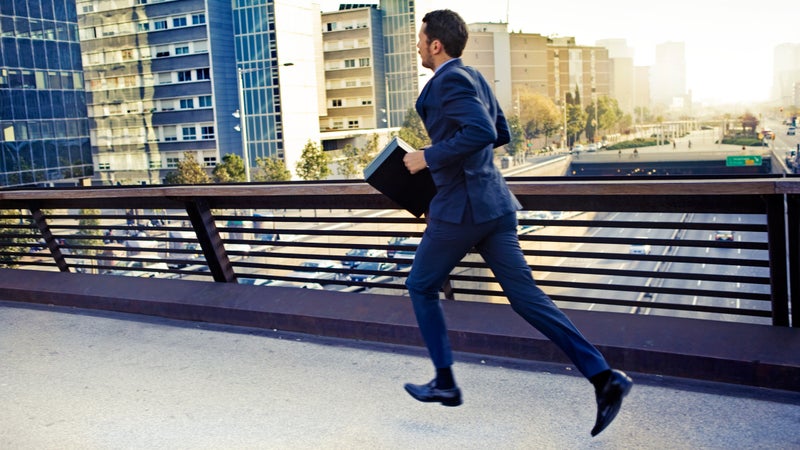
We know what you’re thinking: “I don’t even use all my vacation days. Why should I fake being sick? How is this even a good habit?” Two answers: You are going to use all your vacation days this year, and the unscheduled day off will help you do just that.
Let’s start with using that vacation time. Americans . Working too much—especially in a volatile job market—becomes habitual. Like a who started off having an occasional cigarette, you might not even notice you’ve stopped staying late occasionally and started working late out of habit—every day.
Enter the sick day—your way of taking conscious control over your vacation days. Take that random day off. The result will be a new appreciation for time off. Start with just an afternoon off if you can’t fathom a whole eight hours, and do whatever you want during your off time. The most important thing is that you’re present.
“Work when it's time to work and be there 100 percent, then play when it's time to play and be there 100 percent,” says Dr. Adam Perlman, founder of and executive director of Duke Integrative Medicine. One day isn’t going to revolutionize your life, Dr.��Pearlman says, but it’s a start.
And if you’re caught, tell this to your boss: Taking time off is great for you and the company. The evidence comes from an released in February 2014. It found that after taking time off, 67 percent of people felt refreshed, 32 percent felt more focused, and 40 percent were less stressed.
Have Your Morning Coffee
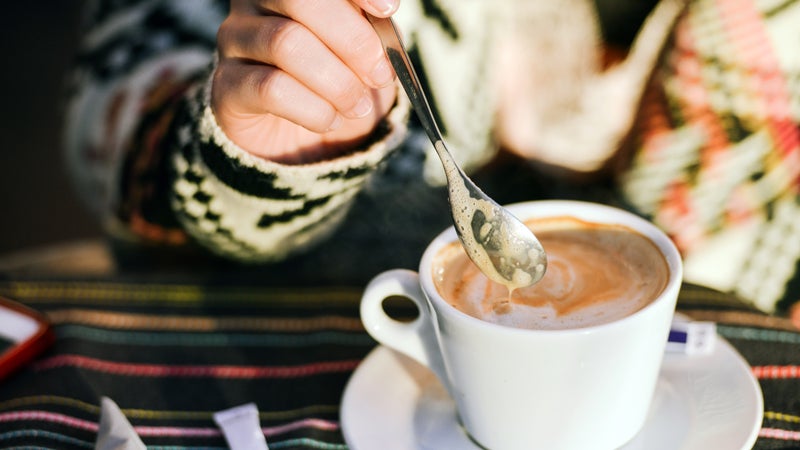
There are two ways of washing the dishes, Zen master Thich Nhat Hanah writes in The Miracle of Mindfulness. You can wash the dishes for the sake of making tea, or you can wash the dishes for the sake of washing the dishes.
The lesson: Every moment has the opportunity to yield greater understanding and calm, as long as you’re willing to live in that moment. In a digital age where distractions and multitasking are the new normal, making time to unplug and de-stress has reached a new level of importance—and has elevated the cup of coffee into a life-calming ritual.
Routines—for coffee, or tea, or anything else—are the like Benjamin Franklin and athletes like (his morning routine: a sponge bath from his assistant). Having a routine, no matter how strange, is one of the time-tested ways of generating the space to pursue more pressing questions. Instead of brewing that cup of coffee to amp up for your morning meeting, follow the lead of Circa CEO and use it to train yourself for a more focused day.
The routine isn’t the only thing that’s good for you. Population-based research shows that regular coffee drinkers live longer, with a 10 to 13 percent reduction in risk of premature death, says . Plus, having a morning cup of joe is linked to a and a reduced risk of cancer.�� that those who drink three to five cups a day see a 65 percent reduced risk of Alzheimer’s or dementia later in life.
If you shy away from coffee because of the caffeine, just go for decaf, says Roussell, and .��, for instance, found that decaffeinated coffee works as an appetite suppressant.
Tomorrow morning, sip away in peace.
Embarrass Yourself… Once a Month
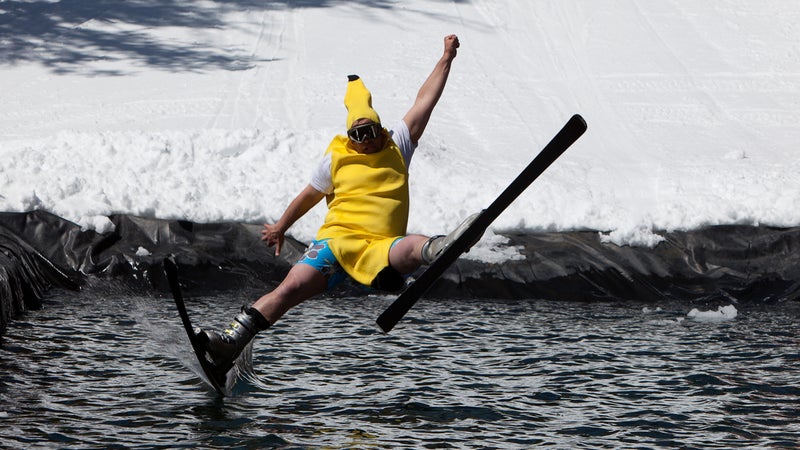
A little secret about your comfort zone: It isn’t a bad place to be. You’re less stressed, less anxious, happier, and perform at a steady level when you’re feeling secure, according to published more than 100 years ago. But your comfort zone isn’t without its risks. You’re likely less creative and adaptable than when you’re .
This paradox can be frustrating, but there is a best-of-both-worlds solution: Get outside your comfort zone often enough to make progress, but retreat regularly enough to consolidate your gains, an argument that’s been . Even when your offensives fail, you’ll be making progress. People who engage in a variety of experiences are . And making mistakes says something powerful about your character.
Being embarrassed shows that you’re aware of the possible consequences of your behavior. This makes you an attractive employee, spouse, friend, or teammate, says Robb Willer, associate professor of sociology at Stanford University.
Still not convinced you should take some potentially face-reddening chances once a month? Consider this: Being too cautious could shorten your life.�� published in Proceedings of the National Academy of Sciences suggests that neophobes—people who are afraid of new things—are more likely to die at an earlier age than their nonfearful, adventurous friends. The stress of being worried all the time can weaken your immune system and prematurely age you, the researchers say.
Give it a shot. Speak up at that meeting with the intimidating execs. Join your friends on that night ski. Let your buddies teach you how to bunnyhop on your road bike. In the end, everyone might like you more for the rosy cheeks those chances induce.
We Tried It: Stop Obsessing Over Gear
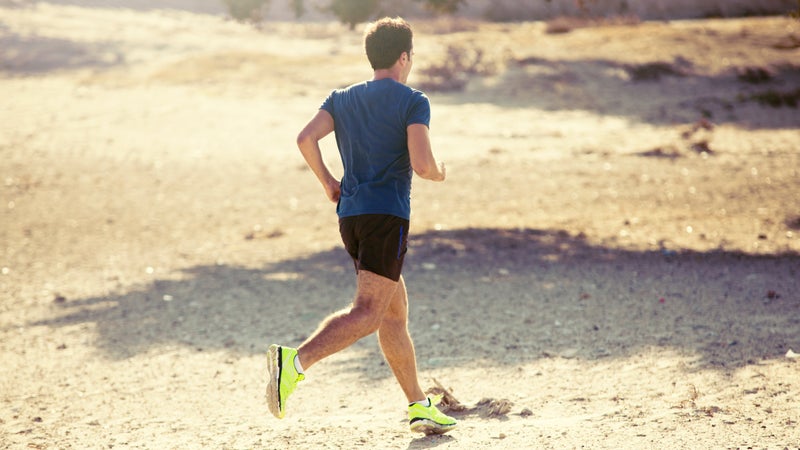
After an eight-hour drive back to Kansas for the Christmas holiday, I dropped my bags and headed out the door for a run. I left my watch inside.
I’ve gone through a variety of phases in my running life: a GPS phase, an iPod phase, a fancy gear phase—I’m probably still in that last one. But now, with nothing more than shoes, shorts, and a shirt, something felt different. Maybe it was the colors—the green grass poking through the black tilled fields; the brown, bare tree trunks; the chalk white of the winter sky. Maybe it was the smell of wood smoke in the chilly air or the frantic clatter of deer hooves as they scattered across the road. After thousands of miles in my running life, maybe I was finally paying attention.
“Running in the Rockies on an awesome trail does not go with listening to music or finding out how much elevation you’ve climbed to the millimeter,” says Duncan Larkin, author of . “Running should be something more spiritual.”
A 2:32 marathoner, Larkin says he wrote his book as a “protest song” after seeing running become increasingly complicated in the Internet age. His book runs the gamut of the running life, and it’s an all-encompassing philosophy that goes far beyond shoes. But there are a few easy things, he says, that you can incorporate now to simplify your run.
First, once a week, go electricity-free. Leave the iPod at home and your GPS on the charger. “Listen to the birds. Hear the world,” he says. “It sounds really yogi-esque, but that’s the basics.”
Next, in your goal race, don’t wear a watch. With nothing around your wrist, you’ll learn to pace yourself by feel. “If you’re glued to a device, you’re going to depend on that device,” Larkin says. “Whereas if you’re in tune with your own body’s clock, you’re going to run the way you should run.”
What’s the point of all this? It’s peace of mind. It’s noticing the green of the fields and woodsmoke in the air. “In our world, we’re so plugged in, and we need to make running the time to unplug,” Larkin says. “We’re not robot-people. We’re humans, and we should be connecting in an animalistic way with our environment.”
Even after my Christmas run, I probably won’t go completely off-grid. Those recovery runs are great for podcasts, and I’m only halfway through Serial (nobody spoil it for me!). And even if I don’t have a set time to run, I do have a set time to be at work. The watch will probably stay on Monday through Friday. But Saturday, when my cat wakes me up at her discretion and the training log calls for a slow five miles, I might just leave the watch at home and see, smell, and really listen to the world around me. After the past 10 years of remembering to bring all my high-tech doodads with me, running in its purest form, devoid of electricity save for the body electric, might be the one thing I forgot.
Take Your Lunch Breaks—All of Them
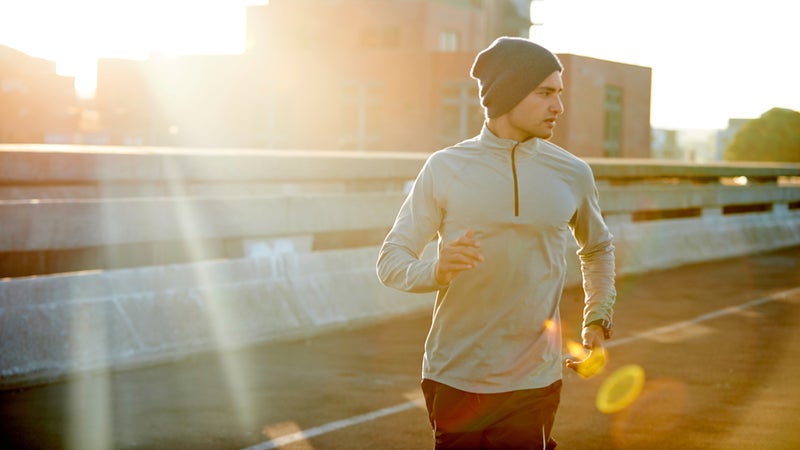
It’s time to ditch lunch with your computer. Get your blood pumping instead, and you could wind up a more efficient worker all afternoon, no extra screen time required.
“Exercise, particularly intense exercise, for just 30 minutes can increase brain plasticity, science-speak for improved memory,” says . Just 20 minutes of aerobic activity at 60 to 70 percent of your max heart rate, researchers have found, . The final result of your lunchtime exercise: a supercharged afternoon in which you’ll likely get more done than you would have if you’d stayed glued to your chair, not to mention a big step toward your training goals.
The right way to do it: Work out, and then eat lunch. “Exercise has powerful effects on insulin sensitivity,” Roussell says. “So exercising before you eat improves your body's ability to shuttle those lunchtime carbs to your muscles and away from your fat cells.”
When you’re eating, eat; don’t do anything else.��Chowing down in front of your computer screen can make you eat more calories at that meal—and later in the day, Roussell says. In a published in the American Journal of Clinical Nutrition, researchers found that people who ate in front of a computer screen—study participants played video games—ate two times more cookies later in the day than the people who didn't eat in front of the screen. The people who ate in front of the screen also reported feeling less full from their meal.��
“Satiety is a cascade of signals that we need to recognize and pay attention to for them to work the most effectively,” says Roussell. If you’re answering emails, chatting with the guy next to you, and trying to finish up a report, you’re not giving your food your full attention. That could compromise your feelings of satiety, he adds. Eat in the break room. When you get back to your desk, you’ll be satisfied—and you might finally come up with that elusive million-dollar idea.
Commute Without Your Car
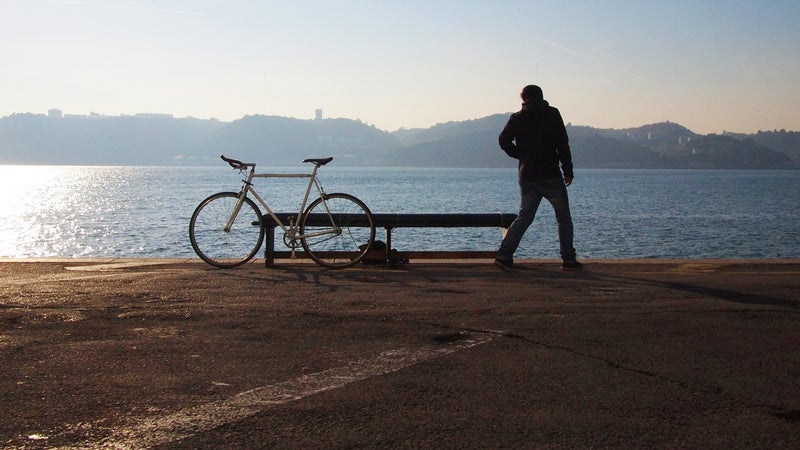
So you don’t get to take a Google bus to work. There are still ways to make your commute more tolerable—fun, even—that will simultaneously make you happier, calmer, and more creative.
For example, you could transform your commute into a workout. Besides burning calories, walking can boost creativity by 60 percent, suggests . Though the researchers did not cite why, it appears that increased blood flow to the brain may have something to do with it.
“Riding to work also kills two birds with one stone. I'm getting exercise and getting to work,” says Andy Clarke, president of the League of American Bicyclists and avid bike-to-worker. Besides the cardiovascular perks, cycling could be your ticket to happiness; a suggests that among people who drive to work, walk, bike, take trains, or ride buses, cyclists are the happiest.
Then there are the financial benefits to the commute turned workout. Owning a car costs around $9,000 a year, Clarke estimates. “The bike I've been riding to work every day for more than 10 years cost around $1,400,” he says. “Of course, I spend a little more each year in my local bike shop getting an annual tune-up, replacing tires, tubes, and cables and such, but I'd be shocked if that added up to $9,000 every 10 years.”
Don’t want to sweat on your way to work? Try public transportation—it may be less stressful than driving yourself.�� that the stress levels of drivers stuck in city traffic are equal to the stress levels people experience before skydiving.
Want to walk or ride but live too far away from work? Pull a double: Take the bus or train part of the way, and ride or walk the first or last few miles, Clarke suggests. Once you work your way up to a five-mile ride, you have some gut-busting benefits to look forward to; the that commuting just five miles each way 200 days a year will help you burn up to 20 pounds of fat.
Stand (and Sit) Up Straight
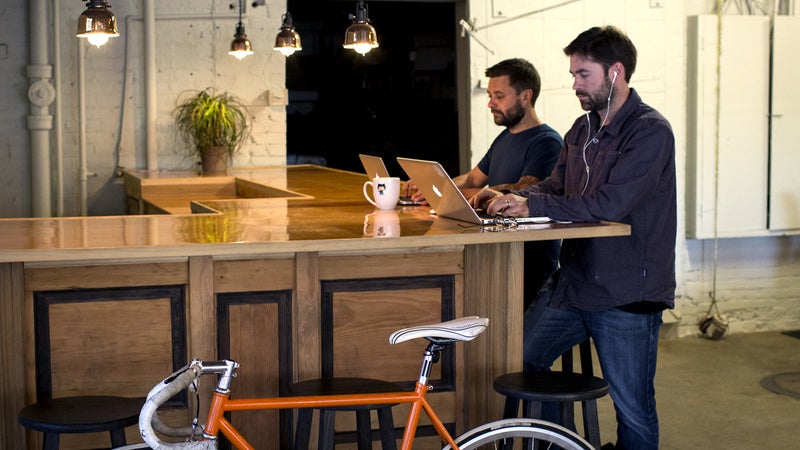
You should hold your shoulders back and sit up straight—but not for the reasons you might expect.�� that people who sit up straight report higher self-esteem, happiness, arousal, a better mood, and less stress. Even more: That lowered stress , especially in women. (Stress can increase cortisol levels, which . Lower stress equals less cortisol equals more sex hormones equals higher sex drive.)
Get started by checking your chair. When you sit, you should recline about 10 to 20 degrees, says Alan Hedge, director of Cornell University’s Human Factors and Ergonomics Laboratory. “In this position, the lower back curves inwards toward the tummy, which is the most relaxed posture for the lumbar spine.” You’ll take body weight off your postural muscles and fatigue less quickly, he says.
Dynamic-back chairs, which move with you as you move, will help you achieve that gentle slope more easily than chairs that lock in specific positions. If you can’t get a dynamic-back chair, at least get that 10- to 20- degree angle by rolling a towel and placing it behind your lower back. Or invest in a ($60) which changes the position of your pelvis to bring your lower back into a more ergonomic position, says Hedge.
Even better: Stand up. Consider a desk add-on like ($400) that slides up and down, allowing you to switch from standing to sitting. Then try Hedge’s 30-minute cycle for minimizing fatigue, maximizing blood flow to the muscles, and eliminating back pain: Sit for 20 minutes, stand for eight minutes, move for two minutes, repeat.
Charge Your Phone in the Kitchen
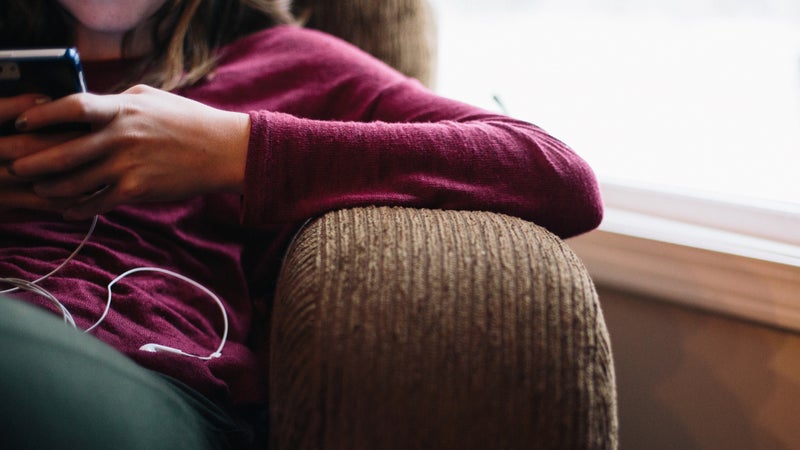
Two things about your smartphone. It emits blue light, and it can keep your brain on high alert. Put them together and you’ve got a recipe for a disastrous night in bed.
First, the blue light. Looking at light on the blue end of the color spectrum sends a signal to your brain to stop the production of melatonin, a hormone that induces sleep, says , a clinical psychologist who specializes in sleep. “Basically, it is telling your brain it’s morning.” The result: a tough time falling asleep. But that’s not the only thing your phone has going against it at night.
“I would argue that blue light isn’t as big of a deal as the level of engagement your phone can require,” says Breus. If you’re emailing, texting, playing Candy Crush, and scheduling morning meetings, “that level of engagement is pretty significant,” he says. It’s enough to keep you awake.
Better to zone out by skimming a magazine, listening to music, or stretching. Even watching Seinfeld on a blue-light-emitting LED screen while tucked under the covers is better than responding to email, says Breus.
Start plugging in your phone outside of your bedroom and get into a more relaxing nighttime routine. If you’re an evening reader like Breus, swap your Kindle for a real book and a . Unlike energy-efficient LED bulbs found in most modern houses, “these bulbs don’t have blue light and won’t impact your body’s ability to make melatonin,” says Breus, who has one on his nightstand.
Want some sleep feedback? Swap a sleep app for the . Billed as the “world’s first noncontact sleep system,” the S+ looks like a little modern sculpture that sits on a nightstand to track your sleep. It’ll identify any issues you may have—like suboptimal room temperature, for instance—to help improve your shut-eye.


